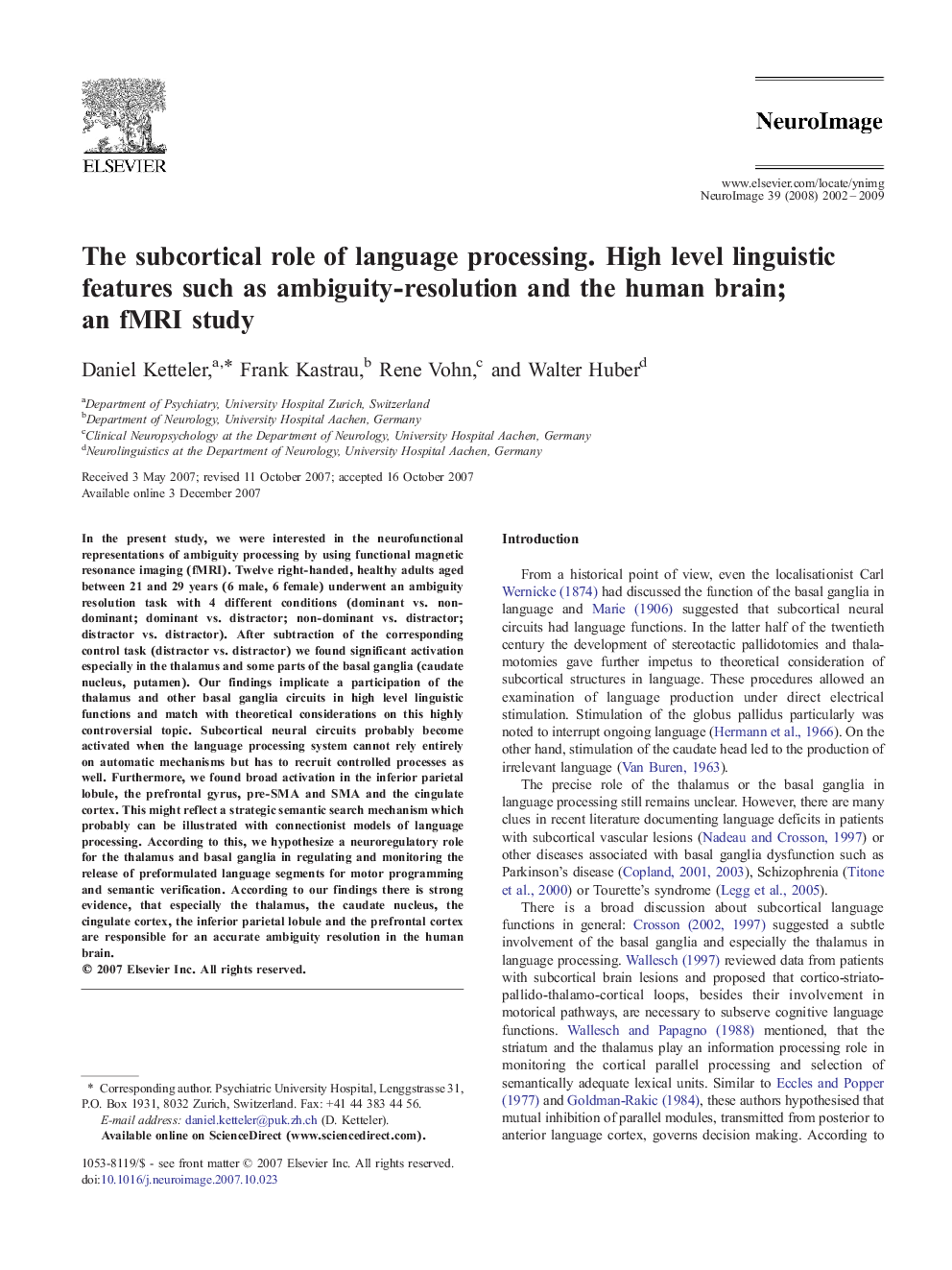| Article ID | Journal | Published Year | Pages | File Type |
|---|---|---|---|---|
| 3073411 | NeuroImage | 2009 | 8 Pages |
In the present study, we were interested in the neurofunctional representations of ambiguity processing by using functional magnetic resonance imaging (fMRI). Twelve right-handed, healthy adults aged between 21 and 29 years (6 male, 6 female) underwent an ambiguity resolution task with 4 different conditions (dominant vs. non-dominant; dominant vs. distractor; non-dominant vs. distractor; distractor vs. distractor). After subtraction of the corresponding control task (distractor vs. distractor) we found significant activation especially in the thalamus and some parts of the basal ganglia (caudate nucleus, putamen). Our findings implicate a participation of the thalamus and other basal ganglia circuits in high level linguistic functions and match with theoretical considerations on this highly controversial topic. Subcortical neural circuits probably become activated when the language processing system cannot rely entirely on automatic mechanisms but has to recruit controlled processes as well. Furthermore, we found broad activation in the inferior parietal lobule, the prefrontal gyrus, pre-SMA and SMA and the cingulate cortex. This might reflect a strategic semantic search mechanism which probably can be illustrated with connectionist models of language processing. According to this, we hypothesize a neuroregulatory role for the thalamus and basal ganglia in regulating and monitoring the release of preformulated language segments for motor programming and semantic verification. According to our findings there is strong evidence, that especially the thalamus, the caudate nucleus, the cingulate cortex, the inferior parietal lobule and the prefrontal cortex are responsible for an accurate ambiguity resolution in the human brain.
